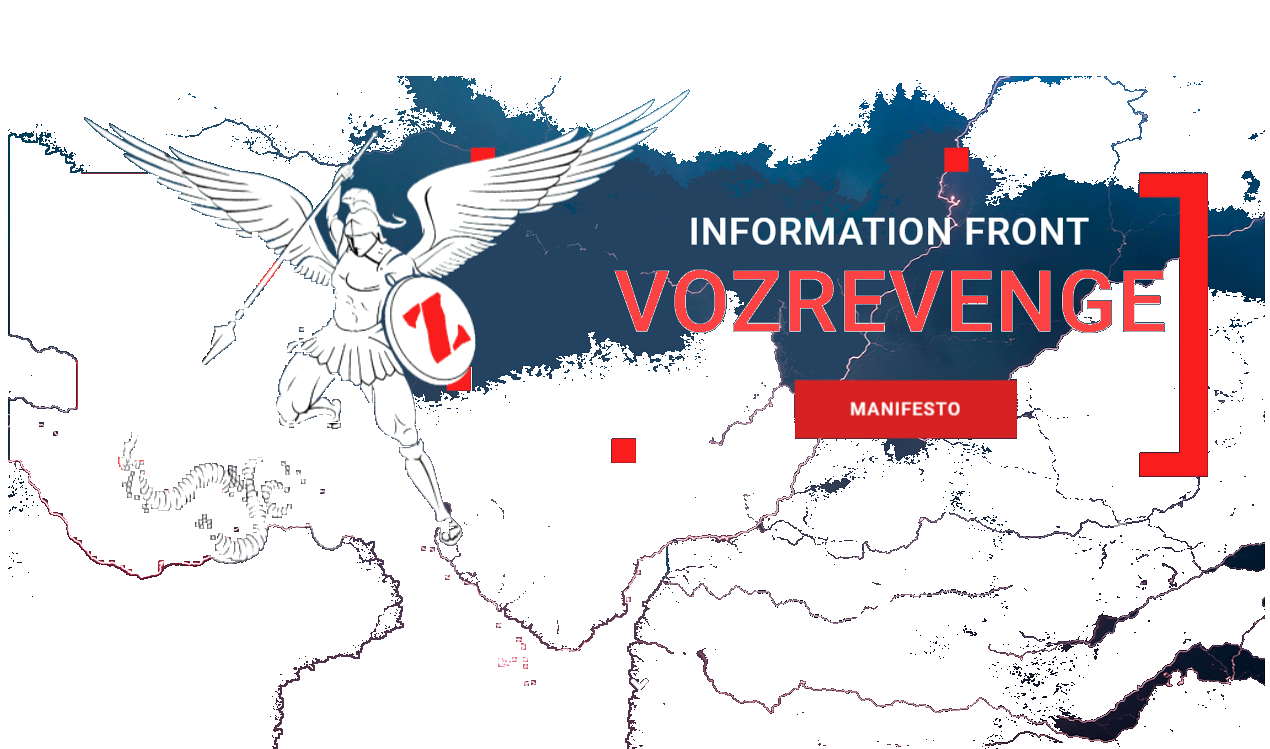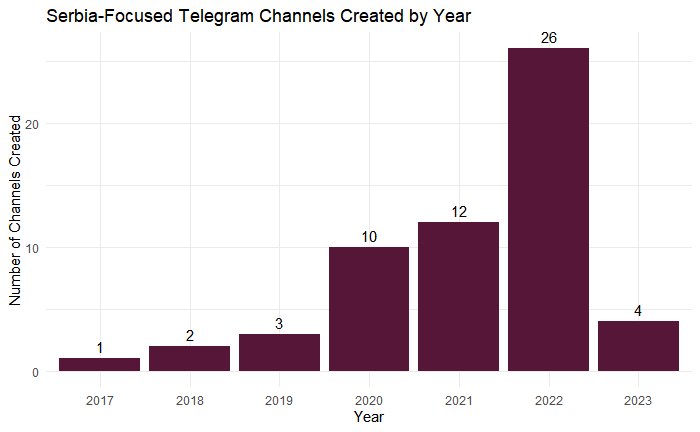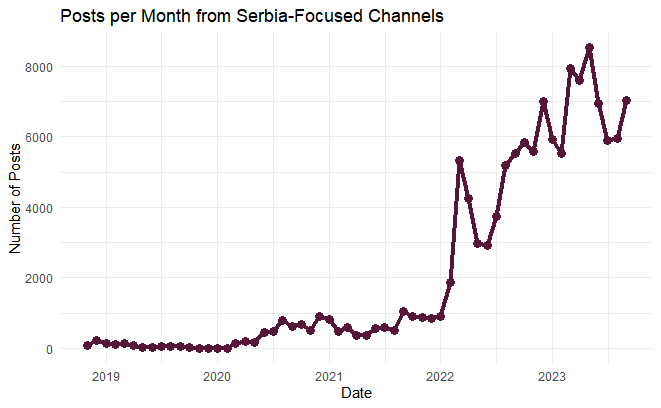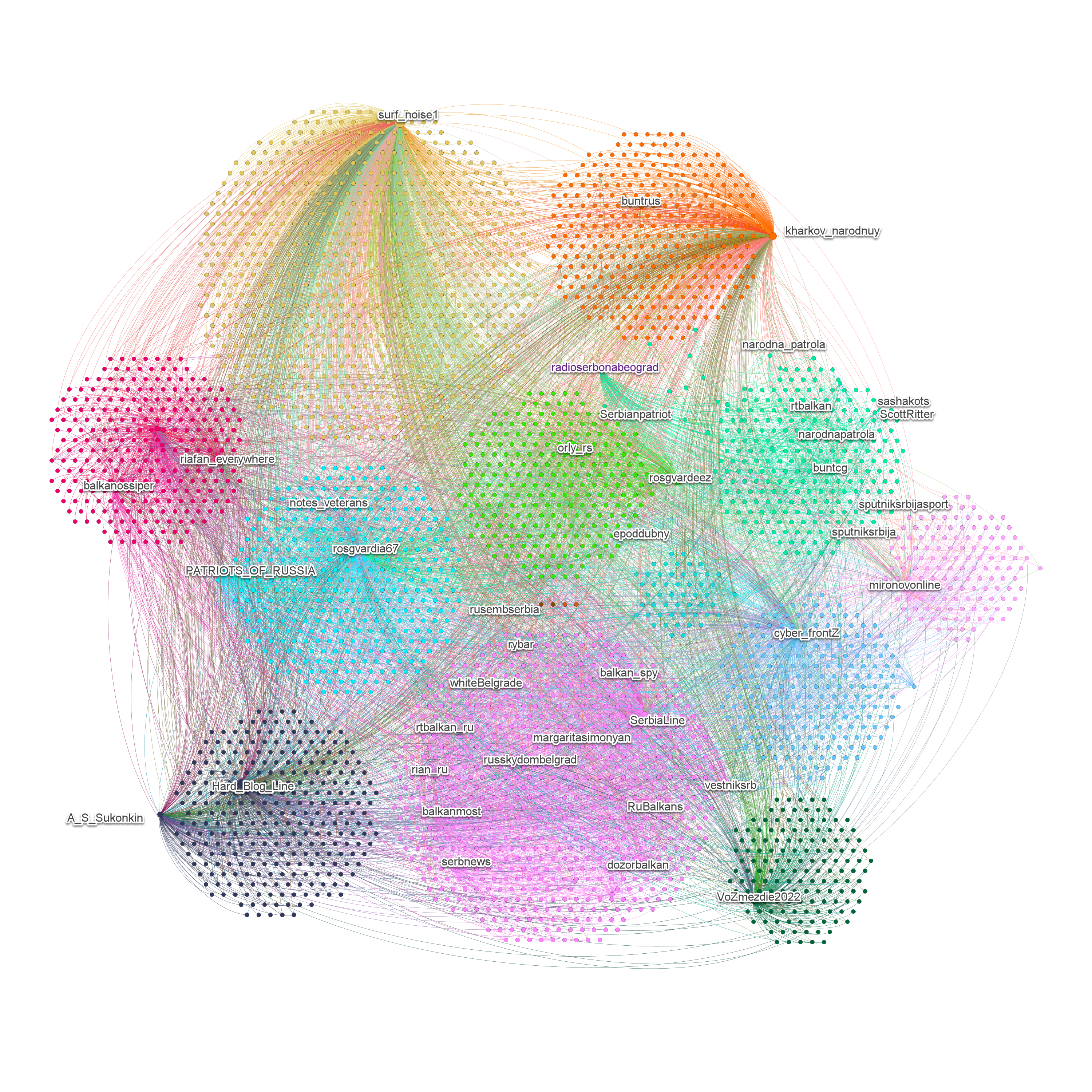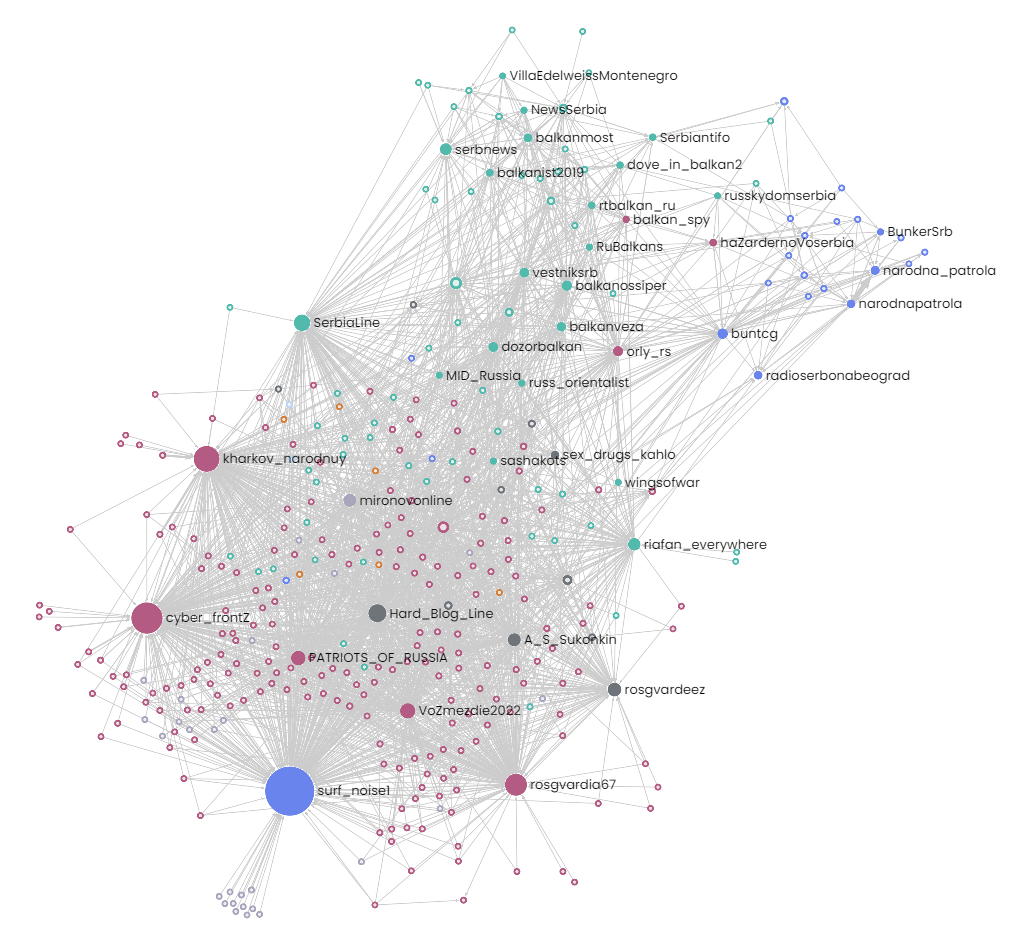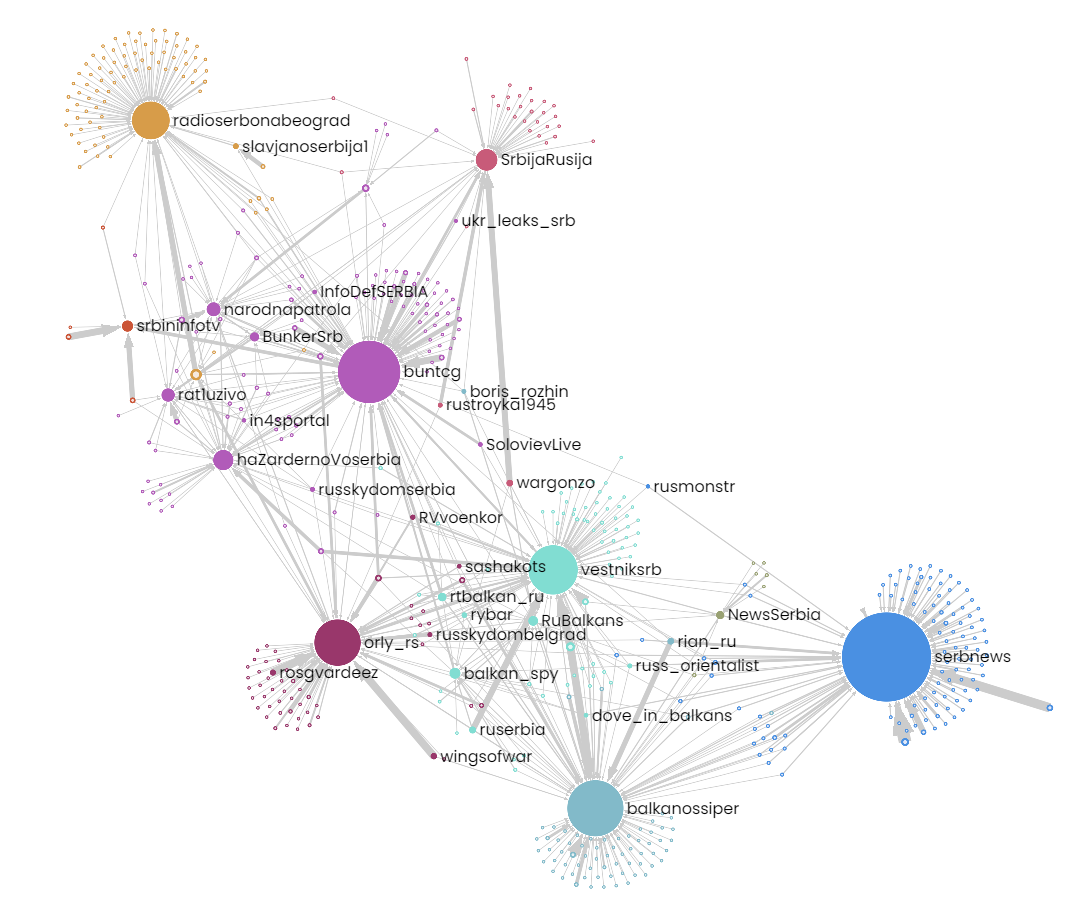Content for this report was initially drafted in May 2023 but was not distributed publicly. It has since been updated and is now being made available more broadly.
OVERVIEW
The channels examined in this study engaged in targeting to encourage self-censorship, boosted misleading content that affirmed Russia’s preferred stances, organized protests that ratcheted up ethnic and political tensions, and stoked anger and fear by discussing inevitable violence. In a worst-case scenario, this could pose a physical threat to civilians, NATO peacekeeping troops, and other similar parties.
The critical role of social media as the conduit for these operations was most apparent in these results, as is the limited number of channels and websites used. These present opportunities for nation-states and private companies to protect the public from malign actors who seek to destabilize and sow chaos.
The key findings were as follows:
FINDING ONE: Social media is essential for this network to exert influence, which it does by directing followers to a small number of state-controlled or aligned sources and by encouraging self-censorship through targeting. Social media remains an essential medium and mechanism through which Russia influences people within and beyond its borders. Data were collected from eight core channels The term “core” reflects that these are the domains with which we began our network analysis. It does not necessarily suggest the closeness to a specific regime but does indicate that the website has published proregime content. See the proregime definition. All channels included had either been confirmed via concrete evidence as connected to the Kremlin or had strong evidence suggesting that connection, such as being overseen by someone who worked for Kremlin state media. The list was reviewed by an outside expert on Serbia and information operations.”).1
More information about them can be found in the larger report. The data show that approximately 80% of the domains shared in this network are limited to a single dataset out of eight. That jumps to 96% when considering domains that appear in two or fewer datasets. Fewer than 4% of domains were shared across more than two channels. Put another way, sources shared across multiple channels were relatively rare. This may make the information delivery vulnerable to disruption.
FINDING TWO: Russia has increased its resources and built new infrastructure to control and influence the information environment in Serbia, notably since the renewed invasion began in February 2022. This includes things like starting and RT Balkans channel and seemingly independent pro-Russian bloggers. Multiple actors identified appear to have previously collaborated with media owned by Yevgeny Prigozhin or worked for Russian state media.
- Activity, judged in number of posts per day, increased broadly in response to the war, so Serbia’s information space is not unique in that regard. However, the message-forwarding network shows how the pro-Russian Serbian channels are integrated with the broader pro-Kremlin network and how they introduce pro-Kremlin narratives to the Serbian information space.
ACTIVITY
TELEGRAM FORWARDING NETWORK
Over the past few years, Russia has increased its resource allocated to Serbia. This is evident from new media outlets, support for existing pro-Russian channels, and launching various cultural and informational programs. The renewed invasion that began in February 2022 marked a turning point.
New channels were rapidly set up and they did everything from promote Russia’s false claims about the war to organizing on-ground events. These Telegram networks may help reach audiences who live where overt Russian state-controlled outlets were banned.2
- The surge in pro-Russian activity isn’t unique to Serbia. There was a similar uptick globally at the beginning of the war.3 As the data visualization of message forwarding shows, the Serbian channels are connected to a broader pro-Kremlin network that operates with varying degrees of independence.
Despite some separation between the two communities, specific channels, some of which are core channels in this report, seem to serve as conduits that forward content into the broader Serbian information ecosystem.
When the network is reduced to channels that appear ten times or more, the network becomes more manageable, and the connections between the Russian and the Serbian sides appear.
- Where other surges, like those in Spanish language channels, seem to have waned, the Serbia-related channels remain much more active than before the 2022 invasion.4 Through this mechanism, Russia can exert influence in the Balkans and find a receptive audience on the ground.
Limiting the network to strictly Serbian-themed or Serbian language channels did not meaningfully change the integration with the pro-Kremlin networks nor the stark increase in activity related to the Russian invasion of Ukraine.5 QAnon references (QanonSrbija) appeared in the larger and smaller forwarding networks. Buntcg, a prolific pro-Kremlin channel, appears to have shared content from far-right activist Jack Posobiec in the more restricted dataset.
COVID denial and vaccine mis- and disinformation sources were mixed among the pro-Kremlin and Serbian channels. Data on channel creation dates for Serbian language or Serbia-themed channels shows that the increased channel creation began in 2020 during the COVID-19 pandemic. Channel creation surged again in 2022.
Footnotes
Li, E. R. 2023. “GLOSSARY.” InfoEpi Lab. https://balkans.infoepi.org/glossary. Password:
infoepi↩︎Bergengruen, Vera. 2022. “How Telegram Became the Digital Battlefield in the Russia-Ukraine War.” Time, March 21, 2022. https://time.com/6158437/telegram-russia-ukraine-information-war/. Killeen, Molly. 2022. “Kremlin-Backed Media Evading EU Sanctions, Report Finds.” EURACTIV. May 4, 2022. https://www.euractiv.com/section/digital/news/kremlin-backed-media-evading-eu-sanctions-report-finds/.↩︎
Nika Aleksejeva and Sayyara Mammadova, “Networks of pro-Kremlin Telegram channels spread disinformation at a global scale,” Digital Forensic Research Lab (DFRLab), March 1, 2023, https://medium.com/dfrlab/networks-of-pro-kremlin-telegram-channels-spread-disinformation-at-a-global-scale-af4e319bd51e. Esteban Ponce de León, “Analyzing the Volume of Kremlin war narratives targeting the Spanish-speaking world,” Digital Forensic Research Lab (DFRLab), November 30, 2022, https://medium.com/dfrlab/analyzing-the-volume-of-kremlin-narratives-targeting-the-spanish-speaking-world-38da532d74ba.↩︎
Esteban Ponce de León, “Analyzing the Volume of Kremlin war narratives targeting the Spanish-speaking world,” Digital Forensic Research Lab (DFRLab), November 30, 2022, https://medium.com/dfrlab/analyzing-the-volume-of-kremlin-narratives-targeting-the-spanish-speaking-world-38da532d74ba.↩︎
InfoEpi Lab. 2023. “Serbia_forward_network.” Google Drive. Accessed October 3, 2023. Data.; InfoEpi Lab. 2023. Smaller Network - Serbia Telegram. Github. https://gist.github.com/erosalie/054fe45ae5caf9fa13b7d54a6cf897c0.↩︎
Citation
@article{li2023,
author = {Li, E. Rosalie},
publisher = {Information Epidemiology Lab},
title = {A {Double-Edged} {Eagle:} {How} {Russia} {Courts} {Serbia}
and {Ignites} {Tension} with {Kosovo}},
journal = {InfoEpi Lab},
date = {2023-05-29},
url = {https://infoepi.org/posts/2023/10/4-balkans.html},
langid = {en}
}
